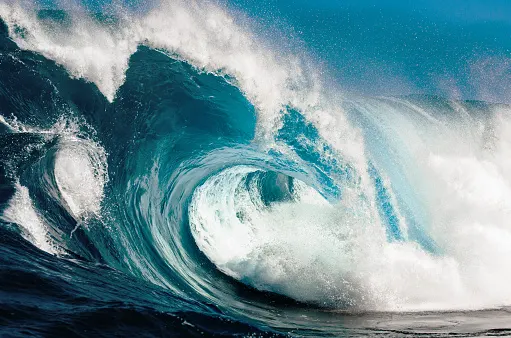
Can artificial intelligence predict tsunamis? This study says yes
Forecasting the outcome of a situation is not an exact science, but AI may be able to accurately pinpoint when a tsunami may happen, according to new research from Cardiff University.
Using artificial intelligence (AI) to predict a potential impending disaster may sound like the theme of a blockbuster movie, but scientists say that it can accurately pinpoint when a tsunami will take place.
The new research, as part of a study that was recently published in Scientific Reports, shows that examination of ocean soundwaves generated by underwater earthquakes has allowed scientists to create an AI that permits the prediction of when a tsunami may occur.
SEE ALSO: Canada's first-ever tsunami tower to be built at B.C. school
Led by Cardiff University, the goal of the research is to utilize the technology in helping experts acquire exact real-time assessments of these geological events.
"Tsunamis have a devastating impact on communities. Developing accurate methods to detect them quickly is key to saving lives," said Usama Kadri, from Cardiff University’s School of Mathematics, in a press release.
Kardi said the research is a key aspect of a larger project to build a "more reliable early tsunami warning system.”

Good Friday 1964 Alaska earthquake and tsunami damage. (NOAA on Unsplash)
“Our findings show we are able to classify the type of earthquake and retrieve its main properties from acoustic signals, in near real time. These methods will complement existing technology for real-time tsunami analysis and provide another tool for experts working to detect them," said Kardi.
TSUNAMIS NORMALLY SET OFF BY VERTICAL EARTHQUAKES
As part of the exploration, the group reviewed deep ocean sound recordings after 201 earthquakes that occurred in the Pacific and Indian oceans.
Typically, tsunamis will be generated following vertical earthquakes, when tectonic plates on the Earth’s surface mostly slide up and down rather than horizontally. As a result, the movement prompts the displacement of a sizable amount of water, thus generating long waves that can create widespread damage onshore.
The upright shifting leads to compressing the water layer, which dispatches specific distinct signals that hold information on the dynamics and geometry of the fault.

Sumatra village damaged by tsunami. (U.S. Navy photo by Photographer's Mate 2nd Class Philip A. McDaniel, Public domain, via Wikimedia Commons)
According to the university, Bernabe Gomez, a PhD student on the research team, used the data to teach AI algorithms to acknowledge when a vertical earthquake has happened. Researchers say this could be incorporated to source future tsunamis in real time.
Tectonic movements are "very complicated, with horizontal and vertical elements," Kadri said, adding, some tremors have a higher capability to generate tsunamis than others.
"Employing digital signal processing techniques, we can analyze sound recordings of underwater earthquakes that train artificial intelligence (AI) algorithms to classify the type of earthquake and its moment magnitude," said Kadri. "This is a significant step for a reliable early tsunami warning system since the type of earthquake can dictate if a tsunami will be generated at all.”
Thumbnail courtesy of Getty Images.
Follow Nathan Howes on Twitter.
